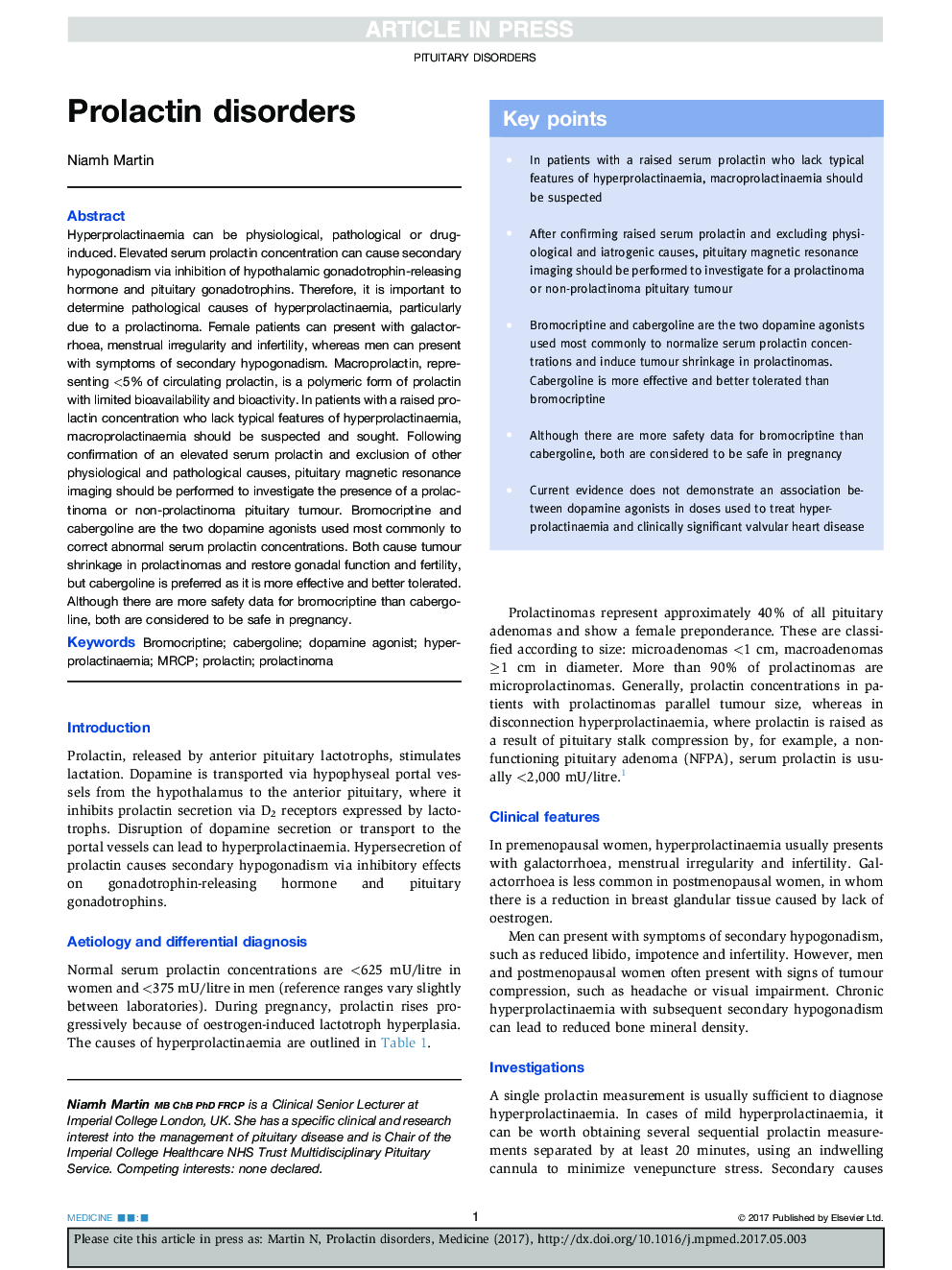| Article ID | Journal | Published Year | Pages | File Type |
|---|---|---|---|---|
| 5681126 | Medicine | 2017 | 4 Pages |
Abstract
Hyperprolactinaemia can be physiological, pathological or drug-induced. Elevated serum prolactin concentration can cause secondary hypogonadism via inhibition of hypothalamic gonadotrophin-releasing hormone and pituitary gonadotrophins. Therefore, it is important to determine pathological causes of hyperprolactinaemia, particularly due to a prolactinoma. Female patients can present with galactorrhoea, menstrual irregularity and infertility, whereas men can present with symptoms of secondary hypogonadism. Macroprolactin, representing <5% of circulating prolactin, is a polymeric form of prolactin with limited bioavailability and bioactivity. In patients with a raised prolactin concentration who lack typical features of hyperprolactinaemia, macroprolactinaemia should be suspected and sought. Following confirmation of an elevated serum prolactin and exclusion of other physiological and pathological causes, pituitary magnetic resonance imaging should be performed to investigate the presence of a prolactinoma or non-prolactinoma pituitary tumour. Bromocriptine and cabergoline are the two dopamine agonists used most commonly to correct abnormal serum prolactin concentrations. Both cause tumour shrinkage in prolactinomas and restore gonadal function and fertility, but cabergoline is preferred as it is more effective and better tolerated. Although there are more safety data for bromocriptine than cabergoline, both are considered to be safe in pregnancy.
Related Topics
Health Sciences
Medicine and Dentistry
Medicine and Dentistry (General)
Authors
Niamh Martin,
